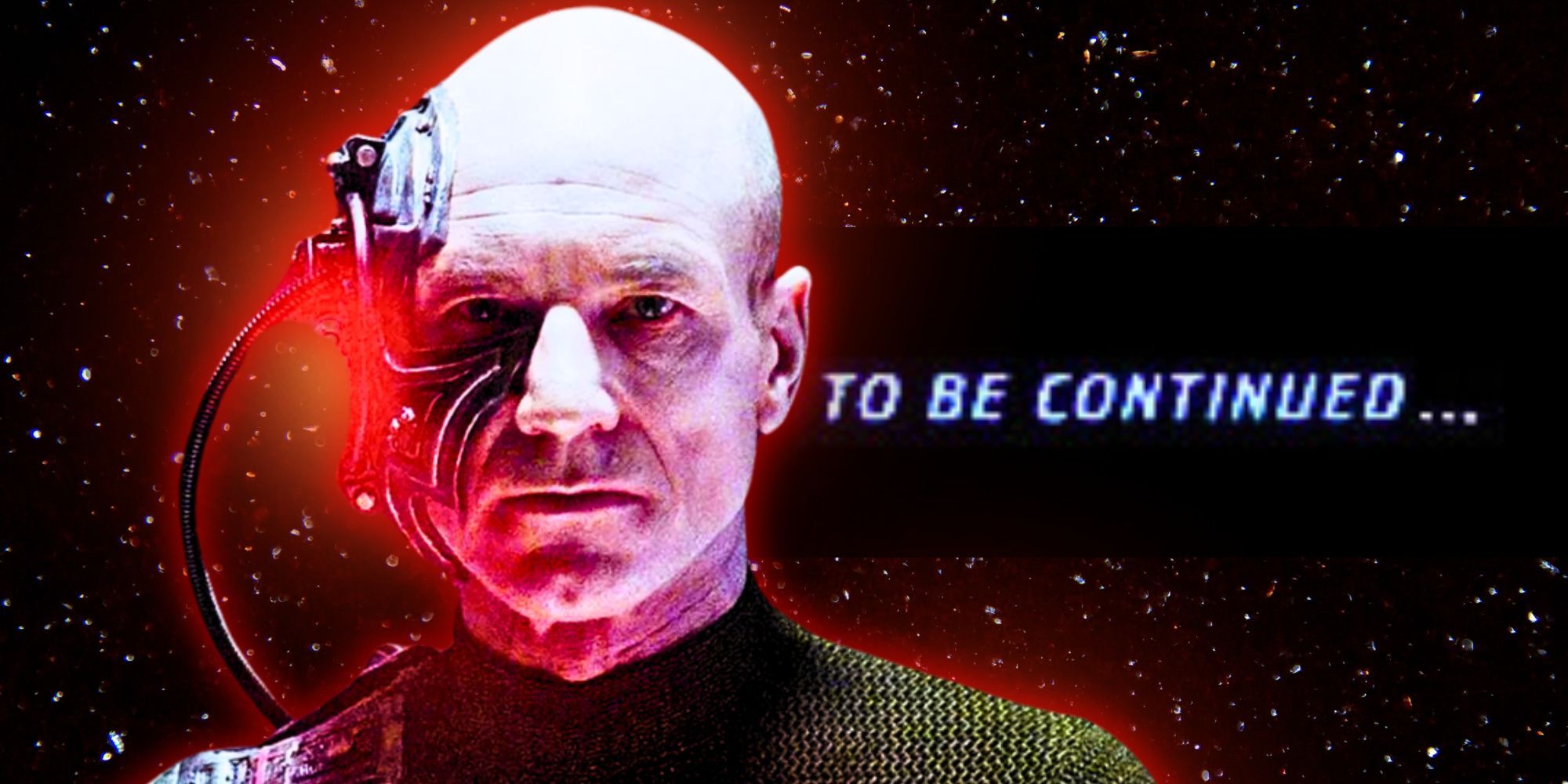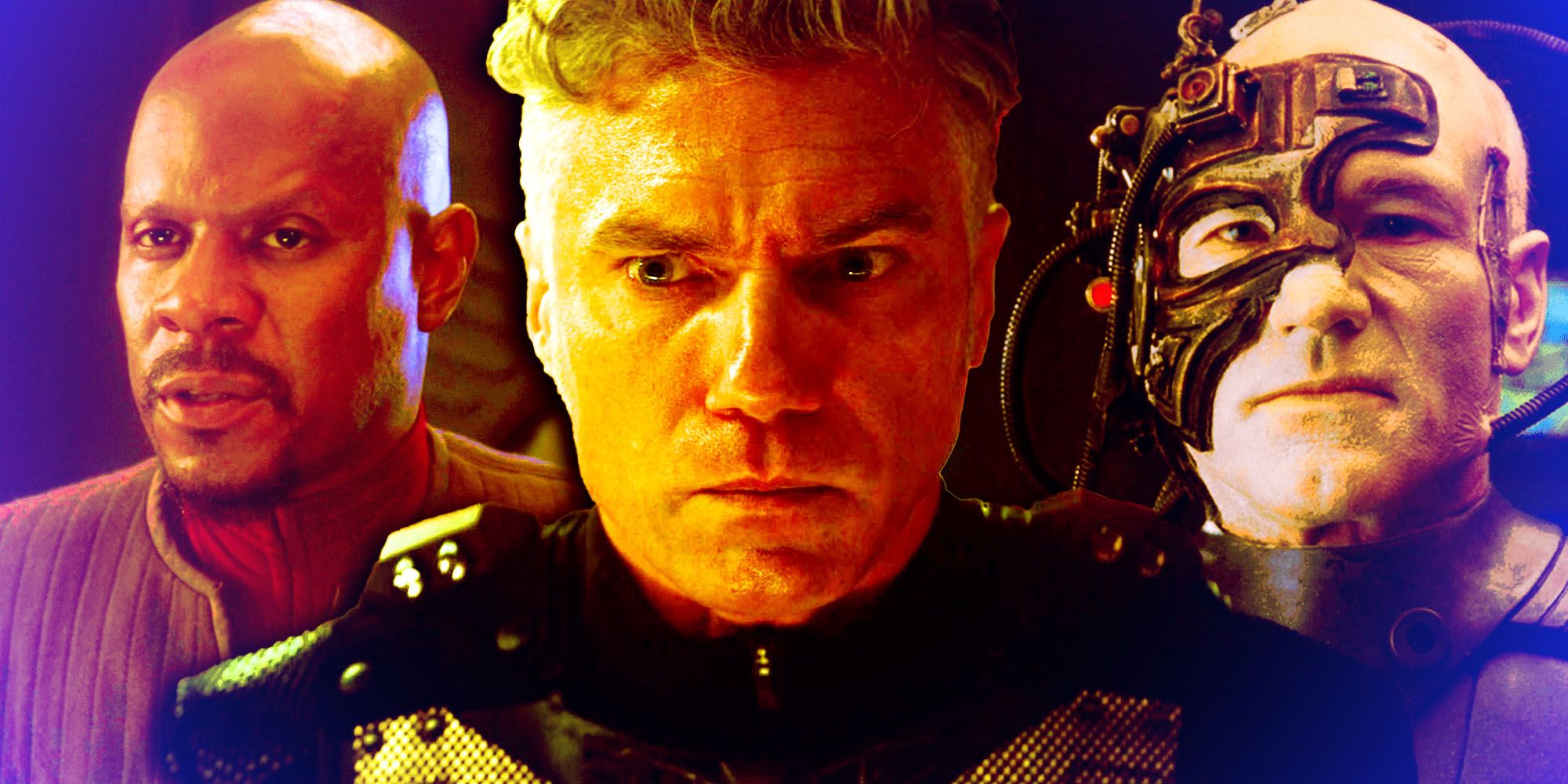Star Trek: The Next Generation introduced cliffhangers to the franchise, and Brannon Braga revealed why they always had to end with “To Be Continued.”

Summary
- Star Trek: The Next Generation broke new ground with dramatic cliffhangers and two-part storylines, a departure from the earlier stand-alone episodes of the original series.
- Continuity and serialized storytelling were discouraged by the studio during the 90s, leading to the requirement of “To Be Continued” for the cliffhanger in TNG’s “The Best of Both Worlds.”
- Modern Star Trek shows have found a balance between episodic and serialized storytelling, with some elements carrying over from episode to episode while still maintaining standalone storylines.
Star Trek: The Next Generation introduced dramatic cliffhangers to the Star Trek universe, but the studio insisted that the first part end with the words “To Be Continued.” The television landscape was very different when Star Trek: The Original Series began in the 1960s, with the focus almost entirely on stand-alone, episodic stories. Although this had begun to change by the 1990s, TNG still mostly held true to this model, with the notable exception of the occasional two-part storyline. TNG’s third season finale, “The Best of Both Worlds, Part 1,” became Star Trek’s first true cliffhanger, and it remains an iconic and memorable episode today.
As part of the TrekTalk 3 telethon that raised over $109,000 for the Hollywood Food Coalition, renowned Star Trek executive producer and showrunner Brannon Braga joined Star Trek: Prodigy co-executive producers Aaron Waltke, Dan Hageman, and Kevin Hageman for a Producing Star Trek panel. When discussing the way television storytelling has changed, Braga spoke about his how continuity and serialization were taboo on Star Trek: The Next Generation, which led to the studio requiring “To Be Continued” for “The Best of Both Worlds'” cliffhanger. Read his quote and view the full panel at the 3:44:40 timestamp below::
Brannon Braga: I think back to when I was doing Star Trek, particularly throughout the 90s, where if you did anything that resembled continuity or a storyline that was being picked up by another episode, the studio just came down hard. They had to be standalone. There could not be any continuing elements, to the point where the first time Next Gen did a cliffhanger, it literally had to say ‘To Be Continued.’ Or else the audience would be confused. ‘What is this? It had no ending.’

Related
Star Trek’s 10 Best Cliffhangers, Ranked
Cliffhangers are a staple of Star Trek that has kept fans coming back to find out what happens next. Here are Star Trek’s 10 best cliffhangers.
Star Trek: Strange New Worlds Brought Back “To Be Continued”
Strange New Worlds perfectly combines episodic and serialized storytelling.
Over time, studios and the people working on television have developed more faith in their audiences, realizing that viewers could understand a cliffhanger without the need for it to say “To Be Continued.” Of course, this change has come in an age of television where cliffhangers have become commonplace, with some shows ending every episode in this way. Modern Star Trek shows like Star Trek: Discovery and Star Trek: Picard have embraced a more serialized way of storytelling, but others, like Star Trek: Lower Decks, Star Trek: Prodigy, and particularly Star Trek: Strange New Worlds have found a happy medium between serialized and episodic styles.
While Strange New Worlds tells a standalone story in each episode, the lives and relationships of the characters grow and change as the show progresses. Certain elements of the show carry over from episode to episode, such as the threat of the Gorn, which has been steadily building from Strange New Worlds season 1 to season 2. Star Trek: Strange New Worlds season 2’s finale, “Hegemony,” brought back the “To Be Continued” ending, with Captain Christopher Pike (Anson Mount) faced with a seemingly impossible choice. Star Trek: The Next Generation introduced cliffhangers and two-parters to the franchise, and modern Star Trek has both embraced this model of storytelling and built upon it.





